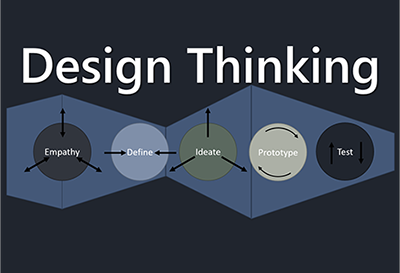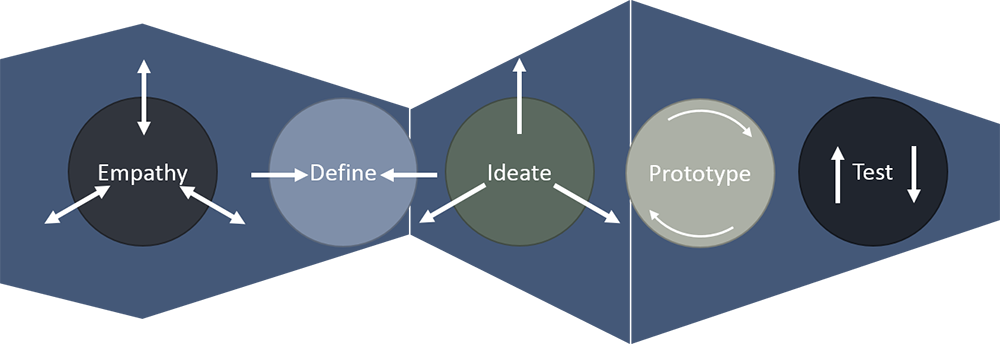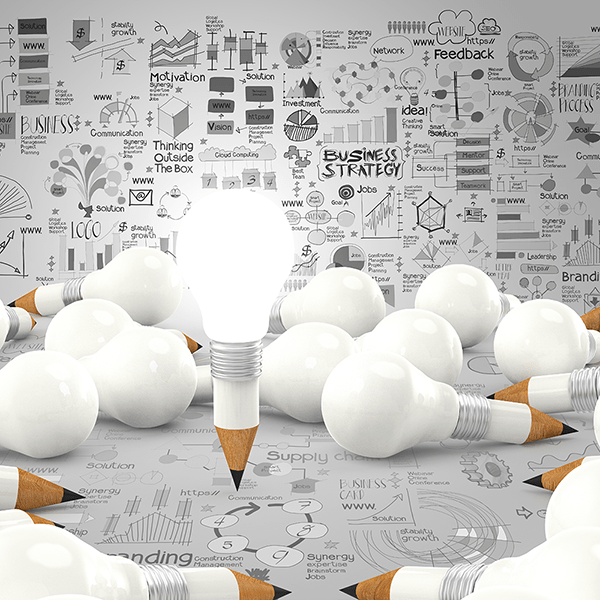
Design Thinking
Design Thinking means different things to different people. It is explained as both a process and a mindset. I lean more toward the mindset definition but that mindset influences the process and framework you apply. I use the diagram below to explain my take on Design Thinking. Although this diagram reflects a linear process, Design Thinking is not linear.

Empathy is the customer or user focus. It is opening up to understand fully what they are seeking. What are their needs or problems? This part of the process allows us to look at a context or situation from someone else's perspective to fully understand what we need to address. It is important to consider all stakeholder perspectives in this phase.
The Define phase is where we bring our understanding of what the customer or user wants into sharp focus. It also establishes the context of the problem. Define is more inward focused to make sure the problem is clear. It is important to redefine the problem in the user's context or understanding. This may also require defining the problems from multiple stakeholder perspectives.

Ideate is about generating potential solutions. It focuses on generating a wide range of possible solutions first. Only after the possible solutions are generated are they evaluated. Like most brainstorming activities, all ideas are put on the table. As these ideas are evaluated, they can be subjected to different constraints. Ideas can be evaluated for potential and narrowed down to a list for further evaluation. The selection criteria of can vary but feasibility is frequently a gate that ideas must pass through.
Prototype and Test are closely linked. As prototypes are developed they are tested. We test them ourselves first, then take them to the user to test.
Prototypes can be built for a variety of reasons. They may be used to further ideate. They can be built to explore feasibility. Prototypes, regardless of whether they are physical or conceptual help you further explorer the design and problem space you are working in.
I consider Design Think to be a major component to the Analysis and Design phases of a tradition project management methodology. There is often an assumption that Analysis and Design are linear. For example if you have 30 days for Analysis and Design on a project, you are not necessarily 50% done after 15 days. Often projects can be very frontend Analysis heavy.
Design Thinking has many advantages. Because of the customer focus it makes sure you are focusing on the real need or problem they are facing. Extensive ideation, coupled with a strong customer focus leads to potentially viable solutions that target the problem. Iterating and testing those solutions provides confirmation that the solutions are feasible and that they address the customer problem.
Design thinking is not about speed. It is not a faster way to design. It does produce better solutions that truly work and avoids potentially providing a solution that does not meet the customer need.
